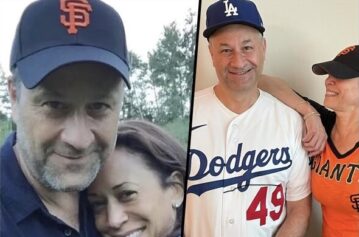Last week Major League Baseball informed the 30 clubs that it has approved a protective cap product for pitchers. The players' union was consulted during the process and both sides seemed to have reached common ground on improving pitcher safety against deadly line drives.
"We're excited to have a product that meets our safety criteria," said MLB executive vice president for labor relations, Dan Halem, in a released statement. "MLB is committed to working with manufacturers to develop products that offer maximum protection to our players, and we're not stopping at all."
The caps, which are manufactured by 4Licensing Corporation, a subsidiary of isoBlox, will be made available to pitchers in spring training and are optional. The cap had to meet National Operating Committee on Standards for Athletic Equipment (NOCSAE) standards at 83 mph, which an MLB-run study concluded was the average speed of a line drive when it bursts through the pitcher's mound.
William Weinbaum of ESPN reported on the new protective gear, including the look of the product. He pointed out that the company says the caps are a little over half-an-inch thicker in the front and an inch thicker on the sides — near the temples — than standard caps, and afford protection for frontal impact locations against line drives of up to 90 mph and for side impact locations at up to 85 mph. The soft padding, isoBlox says, is made of "plastic injection molded polymers combined with a foam substrate" and is designed to diffuse energy upon impact through a combination of dispersion and absorption techniques. In addition to the added thickness, the padding increase adds seven ounces to the weight of a cap, which currently weighs three-to-four ounces, Foster mentioned. The padding is to be sent to New Era to sew into MLB's official custom-fitted caps.
"What we've given [pitchers] is a product with protection they've never had before. It changes the game for them," said Bruce Foster, CEO of 4Licensing. "Short of wearing a helmet, I am doubtful there'll be a product to protect against 100 mph.”
Research revealed on ESPN’s "Outside the Lines" found that 12 pitchers have been hit in the head by line drives in the past six seasons, including five pitchers during a five-month stretch of action in 2012 and 2013.
Among them was Toronto Blue Jays lefty J.A. Happ, who suffered a fractured skull and also sprained knee ligaments on his fall after he was struck in the left ear on May 7, 2013.
On September 5, 2012, Diamondbacks hurler Brandon McCarthy (then a pitcher for the Oakland A's) was hit near his left ear by Angels’ hitter Erick Aybar’s liner suffering a life-threatening brain contusion, epidural hemorrhage, and skull fracture. McCarthy had brain surgery and missed the remainder of the season.
A week later, Astros’ Mickey Storey was hit in the face by Cubs’ David Sappelt’s liner. He was lucky, suffering just contusions to the right hand and jaw and was back on the mound three days later.
On Oct. 25, 2012, Doug Fister was banged on top of the head by a liner but remained in the game.
In June of 2013, Alex Cobb of the Rays was blasted on the left ear by an Eric Hosmer liner.
Happ was asked by "Outside the Lines" whether he'd be receptive to using the new cap and said he wasn't familiar with it and, "I'd have to see what the differences in feel would be — does it feel close enough to a regular cap? You don't want to be out there thinking about it and have it take away from your focus on what you're doing."
While the safety measure is revolutionary and the manufacturers are really feeling their product, it’s going to take a minute to get pitchers to adapt this new device on a large scale. Despite manufactures insisting that the device won’t restrict a pitcher’s throwing motion or impede comfort, baseball is a sport of habit and tradition. Even after nearly dying from the impact of a line drive, McCarthy wouldn’t commit to being the guinea pig for this ground-breaking protective cap.
McCarthy flat out said he won't be using one. The Arizona right-hander says the approved cap isn't "major league-ready," noting it's "too big" and "too hot," and doesn't feel quite right. "The technology is there," he told ESPN.com. "It helps. It's proven to help. But I don't think it's ready yet as a major league-ready product. And I told them that. I told them that's where it's at."
Believe it or not, safety is not the only concern for pitchers. Fashion is important too. As Dodgers two-time Cy Young Award winner Clayton Kershaw put it to MLB Network, "I think it'd take a lot of getting used to. You don't look very cool, I'll be honest."
Creatures of habit like no other, most pitchers aren’t ready to commit to this marriage. They’d rather risk decapitation than wear some bulky, hot head gear.
And that was the Shadow League’s point in the article Chill With The Pitcher’s Helmet Talk , which was written around the time rumblings about “pitcher’s helmets” started heating up.
In a twisted way, most fans believe that adding these safety precautions detracts from the superhuman, warrior persona that has made athletes our heroes and pro sports, a billion-dollar revenue generating titan.
The old Spartacus-gladiator mentality is embedded in its fabric and injury is an embraced part of the risk.
The expression, “no pain, no gain,” was made for world class athletes. That’s why Happ was back, chilling at Tropicana Field on Wednesday, less than 24 hours after suffering a skull fracture.
The public’s reverence and infatuation with pro athletes heavily lies in its belief that losing blood, sweat, tears, teeth and brain cells is part of the heroic and lucrative undertaking.
So while a pitcher might meet his death one day on the pitcher’s mound—or on the way to the store, hiking in the Himalayas, or planking, drunk on a skyscraper—it really is just part of the game.
Chill out and let the players do what they do.
There was a contingent of former players in favor of it such as ESPN analyst Curt Schilling, and some current players said they wouldn’t object to it as an “optional” safety tool for pitchers. But overall pitchers accept the risks of their sport. The frequency numbers still don’t reflect a need for pitchers to be mandated to wear a cumbersome contraption inserted into their hat, no matter how New World, tech-savvy it is.
And really, where does it stop? MLB isn’t the NFL. Eventually pitchers will be on the hill looking like The Knights of The Round Table. Four of the five pitchers who were hit in the head since September 2012, including those most seriously injured — McCarthy, Happ and the Cobb — were struck below the cap line and the protective gear wouldn’t have helped them anyway.
There’s no doubt helmets could offer increased protection for pitchers, who have about one-third of a second to react to liners. Greg Rybarczyk, creator of the ESPN Home Run Tracker, said, “the speeds of line drives that strike pitchers can exceed 100 miles per hour, and an example he analyzed was a 108 mph Vlad “The Mad Hacker” Guerrero line drive in 2006 that struck pitcher Rafael Soriano, who suffered a concussion.”
Forbes.com had some numbers of its own to toss around:
“The incidence rate of Happ’s injury is relatively low: Major League Baseball pitchers throw about 700,000 pitches each year, and about 0.0004% of the time–roughly two to three times per season–a batter’s hit makes contact with a pitcher’s head.”
Those odds aren’t high enough yet to get MLBers to compromise their cool. Looking good is just as important as being safe and that’s what makes athletes larger than life. They just don’t get down like everybody else and at least baseball’s refraining from a dictatorial posture concerning pitcher safety and is leaving the option open for them do them.



